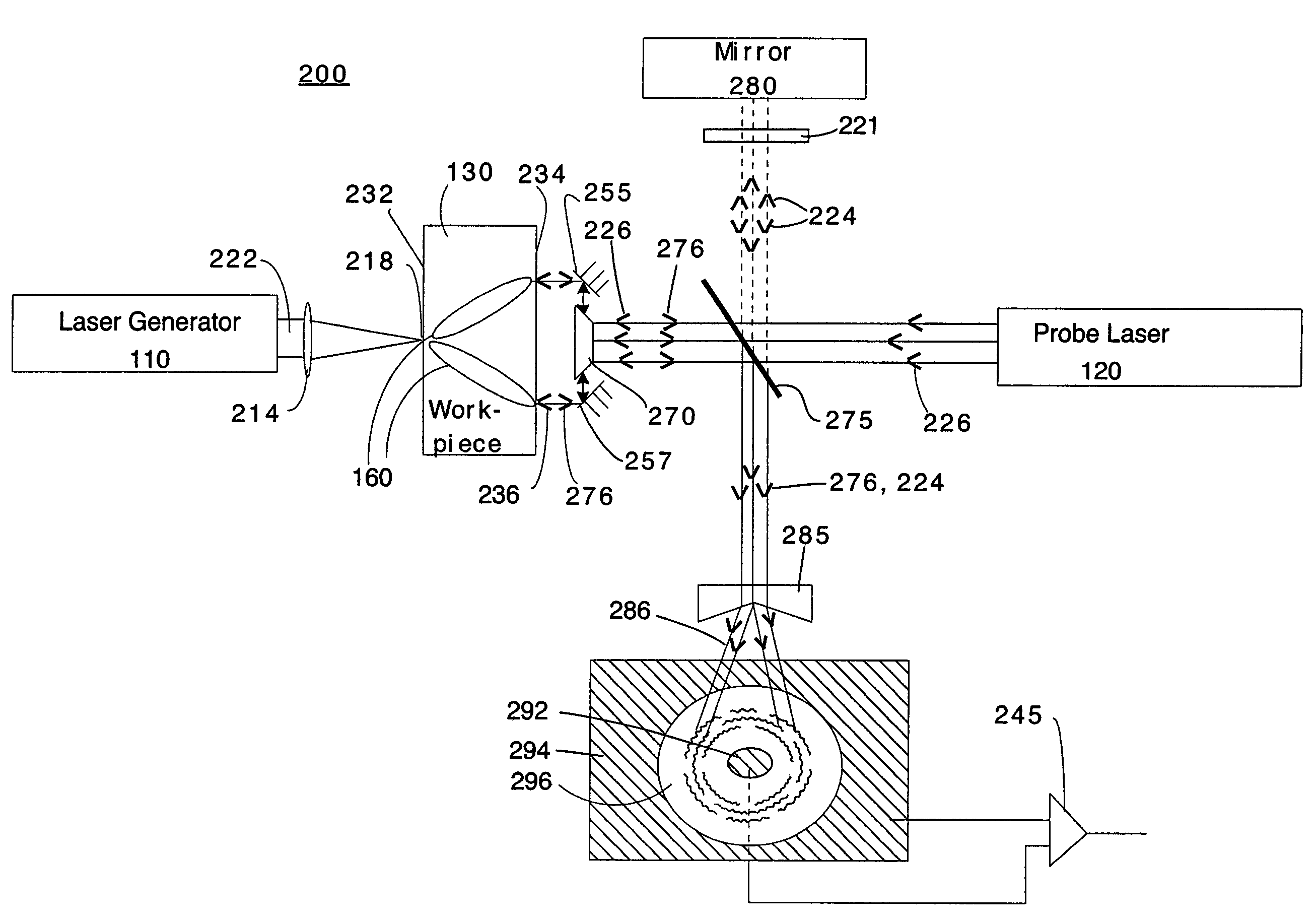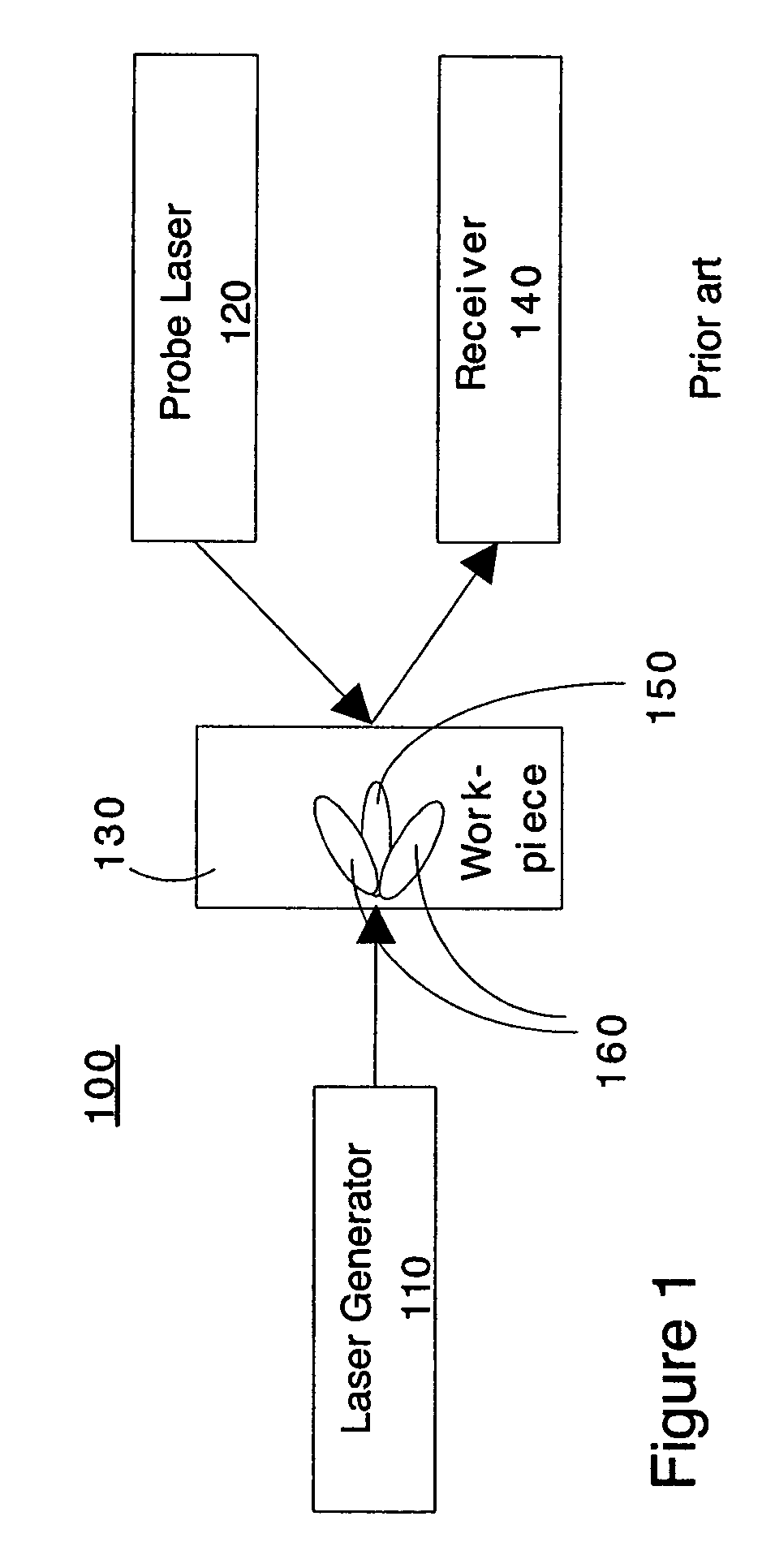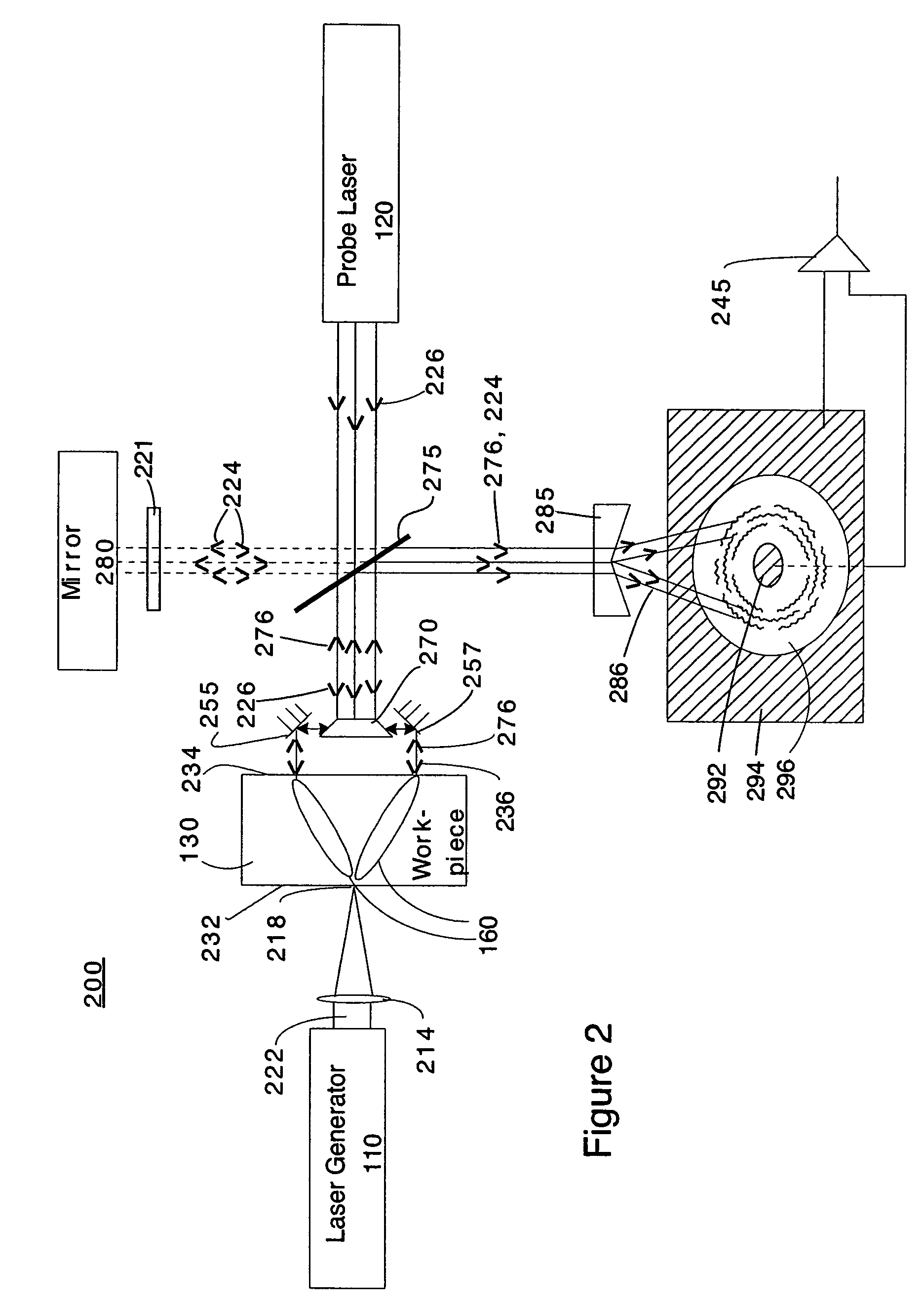Ultrasound single-element non-contacting inspection system
- Summary
- Abstract
- Description
- Claims
- Application Information
AI Technical Summary
Benefits of technology
Problems solved by technology
Method used
Image
Examples
Embodiment Construction
[0033]The presently disclosed technology will now be described more fully hereinafter with reference to the accompanying drawings, in which preferred embodiments are described. The presently disclosed technology may be embodied in many different forms and should not be construed as limited to the embodiments set forth herein. Further, the dimensions of certain elements shown in the accompanying drawings may be exaggerated to more clearly show details. The present invention should not be construed as being limited to the dimensional relations shown in the drawings.
[0034]FIG. 1 depicts a cross-sectional, simplified view of the architecture of a conventional prior art ultrasonic inspection system. The ultrasonic inspection system 100 of FIG. 1 comprises a laser generator 110 for generating an ultrasound signal directed toward a workpiece 130, a probe laser 120 for sampling the ultrasound from the workpiece 130 and a receiver 140. The beam from the laser generator 110 may be focused ont...
PUM
 Login to View More
Login to View More Abstract
Description
Claims
Application Information
 Login to View More
Login to View More - R&D
- Intellectual Property
- Life Sciences
- Materials
- Tech Scout
- Unparalleled Data Quality
- Higher Quality Content
- 60% Fewer Hallucinations
Browse by: Latest US Patents, China's latest patents, Technical Efficacy Thesaurus, Application Domain, Technology Topic, Popular Technical Reports.
© 2025 PatSnap. All rights reserved.Legal|Privacy policy|Modern Slavery Act Transparency Statement|Sitemap|About US| Contact US: help@patsnap.com



